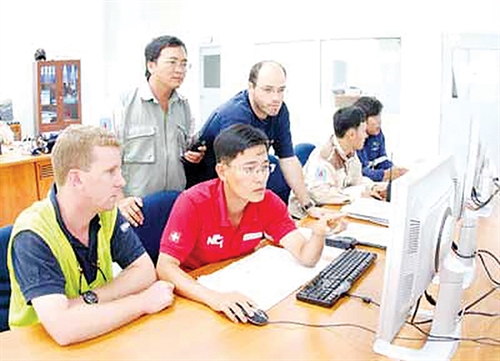Is it compulsory for foreign workers to be covered by social insurance in Vietnam?
Employment of foreigners to meet production and business requirements which domestic workers cannot satisfy is a practical need of enterprises in the country. However, as per Article 2 of Government Decree 143/2018/ND-CP, when being employed in the country, a foreigner is required to participate in social insurance if he (i) possesses a work permit, practice certificate or practice license granted by a Vietnamese authority; and (ii) has entered into a labor contract of an indefinite term or of a term of at least full one year with a Vietnam-based employer.
The above requirement is not applicable to a foreign worker who (i) acts as a manager, an executive officer, an expert or a technical worker of a foreign enterprise that has established a Vietnam-based commercial presence, is temporarily transferred within such enterprise to the commercial presence, and has been employed by such enterprise for at least 12 months; or (ii) reaches the retirement age (full 60 years for men or full 55 years for women).
Social insurance premium rates (in percentage) for different categories of employers/employees subject to compulsory social insurance are as follows:
| Date of commencement of premium payment | Employers | Employees | ||
| Sickness and maternity regime | Occupational accident and disease regime | Retirement and survivorship regime | Retirement and survivorship regime | |
| December 1, 2018 | 3 | 0.5 | 0 | 0 |
| December 1, 2022 | 3 | 0.5 | 14 | 8 |
Employees who cease their work and therefore are not paid for at least 14 days in a month are not required to pay social insurance premiums for that month. This period is not calculated for employees to enjoy social insurance benefits, except where they are permitted to take maternity leave.
An employee who enters into labor contracts with more than one employer and is subject to compulsory social insurance has to pay social insurance premiums together with the employer signing the first labor contract with him/her. Particularly, in order to enjoy benefits from the occupational accident and disease insurance fund, employers have to pay insurance premiums for every single labor contract signed.
What are benefits enjoyable by foreign workers when covered by social insurance?
Like Vietnamese employees, a foreign worker covered by compulsory social insurance is entitled to the five regimes specified below:
Sickness leave and allowance
Maximum leave:
- Up to 60 days, for those working under normal conditions;
- Up to 70 days, for those performing heavy, hazardous or dangerous jobs;
- Up to 180 days, for those suffering diseases that require prolonged treatment;
- Those who have taken the maximum sickness leave in a year but have not yet recovered may also take another leave for convalescence or health rehabilitation.
Maternity leave and allowance
Maximum leave:
- For pregnant employees: Five days for prenatal visits;
- For abnormal pregnancy: Fifty days;
- Maternity leave: Six months;
- For those who use contraceptive methods: 15 days.
Occupational accident and disease allowance
Allowance:
- Lump-sum allowance (for those suffering a working capacity reduction of between 5 percent and 30 percent): Those suffering a working capacity reduction of 5 percent is entitled to five months’ basic salary plus half of the basic salary for every 1 percent of additional reduction.
- Monthly allowance (for those suffering a working capacity reduction of 31 percent or more): Those suffering a working capacity reduction of 31 percent is entitled to 30 percent of the basic salary plus 2 percent for every 1 percent of additional reduction.
Service allowance (in addition to monthly allowance): This allowance is equal to the basic salary for those who suffer a working capacity reduction of at least 81 percent due to paralysis from a spinal cord injury, blindness of both eyes, loss or paralysis of both limbs, or mental illness.
Leave and allowance for convalescence or health rehabilitation after injury or disease treatment: Suffering employees may take a leave of up to 10 days and enjoy an allowance equal to 25 percent of the per-diem basic salary if they stay at home or 40 percent of the per-diem basic salary if they stay at convalescence establishments.
Survivorship allowance for employees who die from occupational accidents or diseases is equal to 36 months’ basic salary.
Pension and retirement allowance
Monthly pension is equal to pension-to-salary percentage multiplied by average monthly salary based on which social insurance premiums have been paid.
Lump-sum allowance for employees whose period of actual social insurance premium payment is longer than the period eligible for the pension-to-salary percentage of 75 percent is calculated according to the number of years of social insurance premium payment beyond the period eligible for the pension-to-salary percentage of 75 percent, with every excessive year of premium payment equivalent to half of average monthly salary based on which social insurance premiums have been paid.
Lump-sum social insurance benefits in certain cases is calculated according to the number of years of social insurance premium payment, with every year of premium payment equivalent to two months’ average salary based on which social insurance premiums have been paid.
Survivorship allowance
Burial allowance is equal to 10 months’ basic salary in the month of the employee’s death.
Monthly survivorship allowance payable to every family member of the dead employee in certain cases is equal to 50 percent of the basic salary. For family members who have no direct caretakers, this allowance is equal to 70 percent of the basic salary.
Lump-sum survivorship allowance:
For pensioners: If they die in the first two months of pension enjoyment, their relatives are entitled to 48 months’ monthly pension. If they die in subsequent months, this allowance is reduced by half of monthly pension for every month following the first two months of pension enjoyment. The lowest allowance is equal to three months’ pension.
For other cases: Every year of social insurance premium payment is equivalent to:
- One and a half months’ average salary based on which social insurance premiums were paid, for the years prior to 2014;
- Two months’ average salary based on which social insurance premiums have been paid, for the years from 2014 onward.









